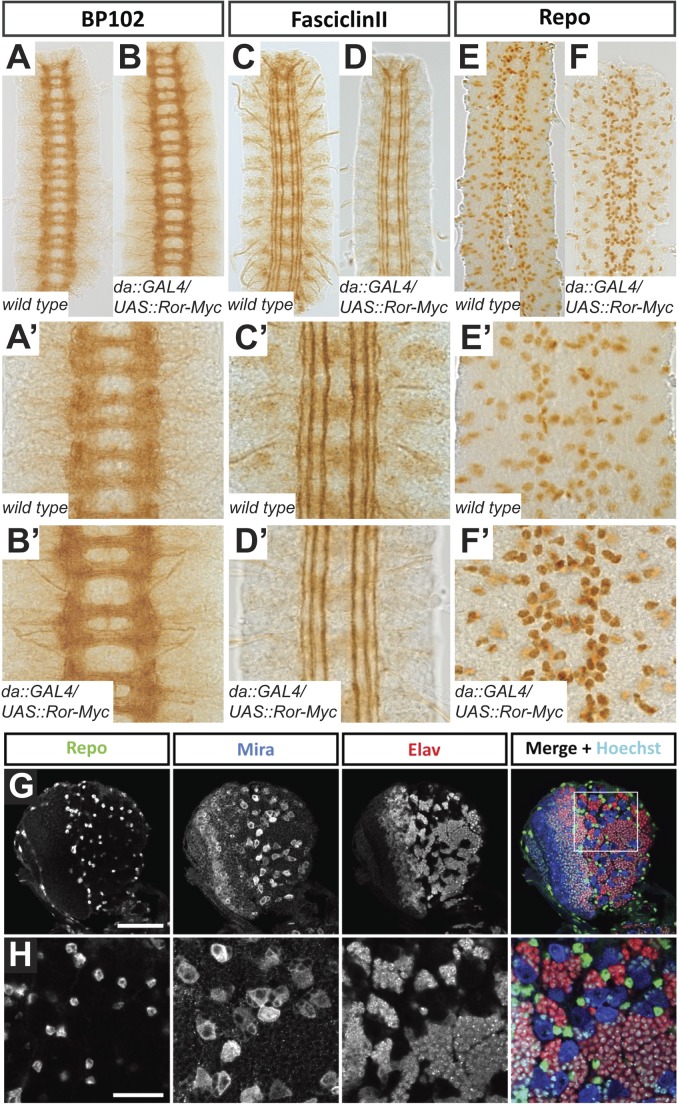Fig. 8.
The morphology of the ventral nerve cord in Ror-Myc overexpressing embryos is normal. (A-B′) Axon tracts of the CNS visualized using the BP102 antibody in wild-type (A,A′) and Ror-Myc overexpressing embryos (B,B′). The CNS of embryos overexpressing Ror resembles the wild type. (C-D′) Longitudinal axon tracts visualized with Fasciclin II. In da::Gal4/UAS::Ror-Myc embryos (D,D′) all three fascicles are intact and resemble the wild type (C,C′). (E-F′) Glial cells visualized with the anti-Repo antibody. The pattern in da::Gal4/UAS::Ror-Myc embryos (F,F′) resembles the wild type (E,E′). Images (A′-F′) are higher magnifications of the preparations shown in images (A-F). All images show three abdominal segments of late stage embryos; anterior is up. (G,H) Confocal images of the CNS of a third instar da::Gal4/UAS::Ror-Myc larva. Expression patterns of the indicated proteins are normal and resemble the wild type (cf. Fig. 2, Fig. S2). (G) Overview of a brain hemisphere. (H) Higher magnification of the larval brain lobe. Scale bars: G, 50 µm; H, 20 µm.

